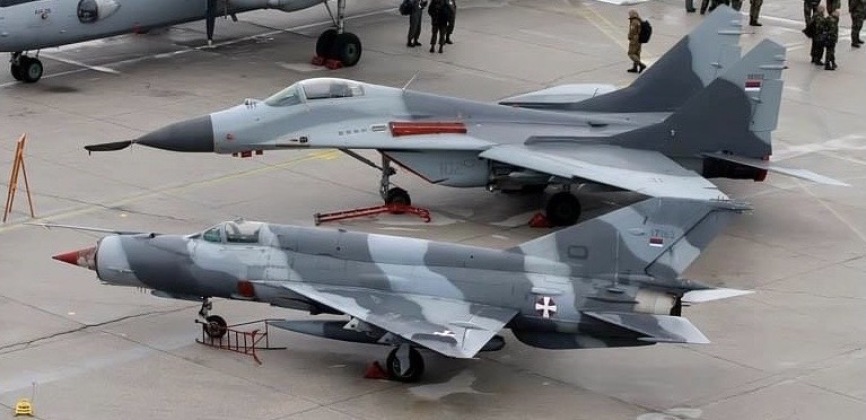News
China’s New JF-17 Bl.3 Jet Has Fifth Generation Avionics: It Could Be the Perfect Fighter For Serbia
The Serbian Defence Ministry is currently considering multiple options for the acquisition of a new fighter class to modernise its fleet, which at a time of rising tensions in the Balkans has only a limited capability to secure the country’s airspace and deny potential aggressors air supremacy. Fighter acquisitions will follow the purchase of new air defence systems to modernise Serbia’s Cold War era network, which has recently been enhanced with new Russian Pantsir-S1 short range range systems and Chinese HQ-22 medium range systems. Serbia’s choice of fighters is expected to be determined not only by the capabilities aircraft can offer, but also by political factors with offers from the United States expected to be ruled out due to politically motivated operational restrictions in place. The threat of Western economic sanctions for major purchases of Russian armaments, however, could deter Serbia from considering Russian options such as the MiG-35 ‘4++ generation’ or Checkmate fifth generation fighters – and are thought to have been a major factor leading Belgrade to acquire the HQ-22 rather than Russian alternatives such as the BuK-M3 or S-300PMU-2.

With Russian options potentially being ruled out, while those from the West could be considered unfavourable for political reasons due to NATO’s support for separatist forces in Kosovo, China could well emerge as the most likely provider of new fighters. Although China has begun to offer a fifth generation fighter based on the FC-31 design for export, this is expected to be unaffordable leaving the lighter J-10C and JF-17 Block III as more likely options. The JF-17 in particular could potentially be an ideal fighter for Serbia’s defence needs due to its combination of very low operational costs and highly sophisticated fifth generation level avionics and weaponry. With China being one of just two countries alongside the United States currently fielding indigenous fifth generation fighters at squadron level strength, the JF-17 Block 3 leverages technologies from the J-20 stealth fighter resulting in strong commonality in their avionics and armaments. It combines this with an airframe that can sustain very high availability rates and operate with little maintenance, making it optimal should Serbia come under sustained air attacks from a larger force which would otherwise leave supply lines at risk.

Serbia’s fighter fleet is currently limited to just 14 aircraft, all of them MiG-29s, with older MiG-21 lightweight fighters having been recently retired. The JF-17 Block 3 provides not only a far superior performance to the MiG-29, but could also allow Serbia to significantly expand its fighter fleet to well over two dozen aircraft without significantly increasing expenditures. JF-17 acquisitions would allow Serbia to avoid openly taking a side in ongoing hostilities between Russia and NATO, which Belgrade has consistently sought to do, while providing it with next generation level avionics and access to some of the most capable air to air missile classes on the continent. Like Russian fighters the JF-17 Block 3 will be highly compatible with and able to network with Serbia’s existing assets including its air defence systems, while at the same time allowing Serbia to avoid Western sanctions as a major client for Russian arms. Another significantly possibility is that the JF-17 could be acquired to expand fleet numbers and operate alongside another heavier end fighter class – possibly modernised MiG-29 variants or even French Rafale fighters which have been considered. The engine commonality between the JF-17, the MiG-29 and the MiG-35 could make this highly viable. In this case, they could potentially replace the country’s 27 Yugoslav-built lightweight J-22 attack and reconnaissance aircraft which have similarly low operational costs to the JF-17 Block 3 but a far poorer performance, allowing another heavier fighter class to replace the MiG-29 and providing a very effective and versatile lightweight complement.












